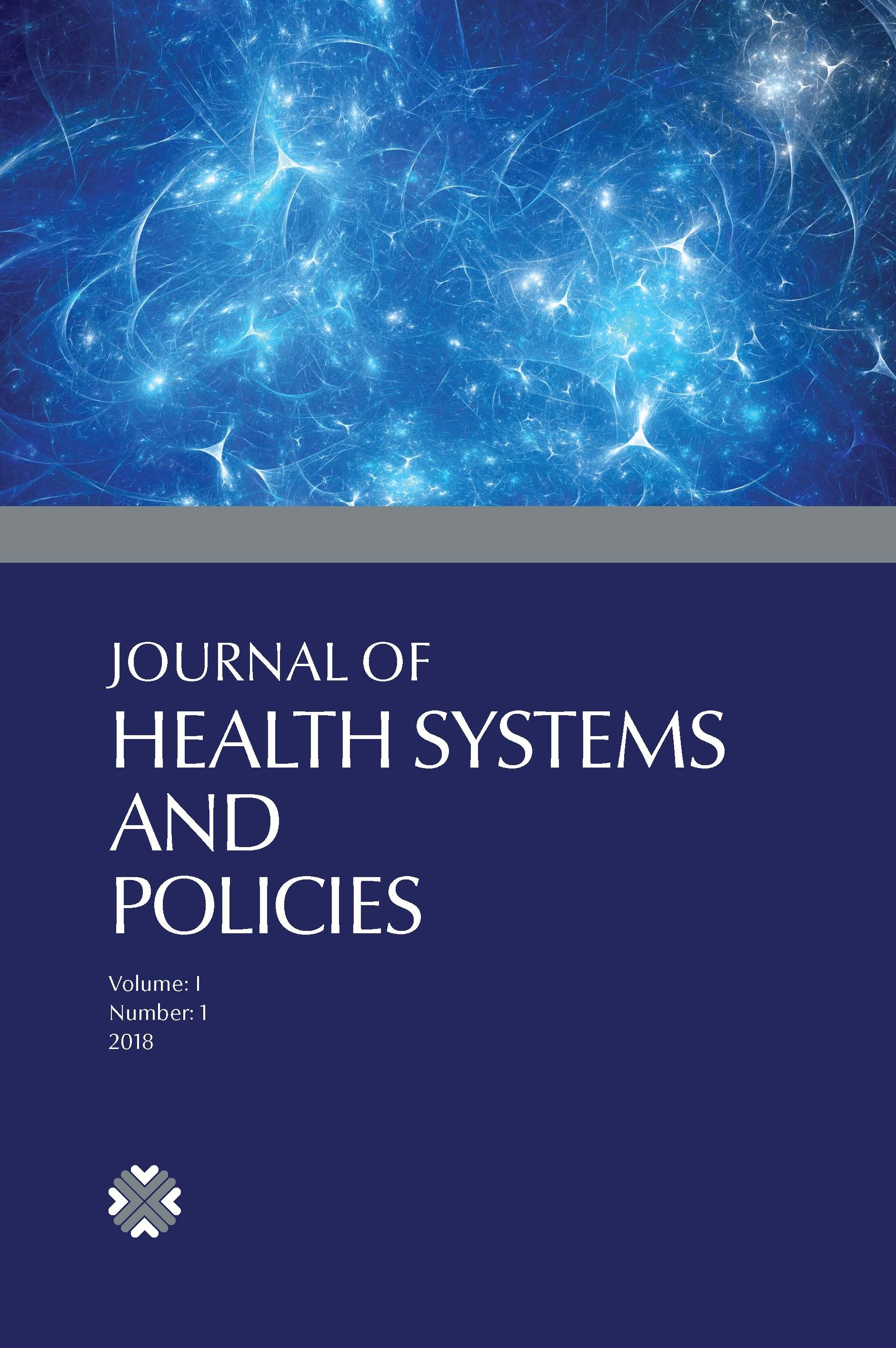Analysis of Transaction Cost Theory of Magnetic Resonance Imaging (MRI) Services Provided by Outsourcing in Hospitals: A University Hospital Example
Anahtar Kelimeler:
Sağlık Hizmetleri, İşlem Maliyeti Teorisi, Dış Kaynak
Analysis of Transaction Cost Theory of Magnetic Resonance Imaging (MRI) Services Provided by Outsourcing in Hospitals: A University Hospital Example
As in the literature, hospitals often resort to outsource within the framework of transaction cost theory in service provision, also its observed in the result of this study; hospitals are getting profit via outsourcing services and they could focus on providing their basic ability ‘health services’. Transaction cost theory seeks to find the most productive boundaries of the enterprise by seeking an answer to the question of whether it is more appropriate for businesses to produce goods or services themselves or buy them from the market. "Basic ability" and "outsourcing" are two important interrelated concepts in businesses. One of the areas that is the most observed in Turkey is the outsource of imaging services. With this study, MRI services performed for 9 months in 2017 through outsourcing in a university hospital were examined within the framework of the transaction cost theory and it was determined that the hospital earned 511.798,18 TL profit. As in the literature, hospitals often resort to outsourcing within the framework of transaction cost theory in service provision, outsourcing services for their profit and they were also observed in the result of this study, where they could better focus on providing health services with basic ability.
Keywords:
Health Services, Transaction Cost Theory, Outsourcing,
___
- Baert, A.; Knauth M.; Sartor K.. MRI of the Lung. Berlin Heidelberg:Springer-Verlag. 2009, 217-55.
- Barney, J.,; Hesterly, W. Organizational economics: Understanding the relationship between organizations and economic analysis. In Handbook of organization studies S. Clegg, C. Hardy, & W. Nord., Eds.; London: Sage. 1996; pp 115-147.
- Bühner R.; Tuschke, A.; Outsourcing, Die Betriebswirtschaft, S. 57(1), ss. 20-30; Quinn, J.B., Hilmer, F.G., Strategic Outsourcing, Sloan Management Review, 1994, 35, p. 3-55.
- Cengiz, S.; Dış Kaynaklardan Yararlanma, Bartın. Published Online: 2015.
- Coase, R. The nature of the firm. Economica. 1937, 4, 386-405.
- Çatı, K.; Çömlekçi, İ.; Zengin, E. Dış Kaynak Kullanımının İşletme Finansal Performansına Etkisi: Düzce İli İmalat Sanayisinde KOBİ Yöneticileri Üzerinde Bir Araştırma. KMÜ Sosyal ve Ekonomik Araştırmalar Dergisi. 2015, 17, 28, pp. 56-67.
- Ekin, A.; Yanık, A.; Kıyak, M. Bir Eğitim ve Araştırma Hastanesinde Dışardan Satın Alınan Hizmetlerin Ekonomik Değerlendirmesi. Hacettepe Sağlık İdaresi Dergisi. 2012, 15, 1, 1-23.
- Gözüküçük, M.; Çelik Y. Sağlık Bakanlığı Hastanelerinde Dışarıdan Sağlık Hizmeti Alımı: Karşılaşılan Sorunlar ve Çözüm Önerileri. Hacettepe Sağlık İdaresi Dergisi. 2012, 15, 2, 1-25.
- İşçi, E. Hastanelerin Yönetiminde Dış Kaynak Kullanımının Önemi ve İstanbul İlinde Bir Uygulama. Yüksek Lisans Tezi, Marmara Üniversitesi Sosyal Bilimler Enstitüsü Yönetim Organizasyon Bilim Dalı, İstanbul, 2004.
- Kalemci, R. A. İşlem Maliyeti Kuramının Temel Varsayımlarında Güvenin Yeri Tartışması. İş Ahlakı Dergisi. 2013, 6, 2, 55-83.
- Karahan, A. Dış Kaynak Kullanımının Verimlilik Üzerine Etkisi (Hastane Yöneticileri Üzerine Bir Araştırma). Balıkesir Üniversitesi Sosyal Bilimler Enstitüsü Dergisi. 2009, 12, 21, 185-199.
- Kaya, T.; Adapınar B.; Özkan, R. Temel Radyoloji Tekniği. Nobel Yayın Dağıtım; İstanbul, 1997.
- Koçel, T., İşletme Yöneticiliği; 17. Baskı (No: 3668): Beta Basım Yayın; İstanbul, 2018.
- Lacity, M.C.; Hirscheim, R. The Information Systems Outsourcing Bandwagon. Sloan management Review. 1993, 35,1, p. 73-85.
- Mersin, D. Dış Kaynak Kullanımını (Outsourcing'i) Ortaya Çıkaran Gelişmeler, http://outsourcingturkiye.blogspot.com/2005/12/D-Kaynak-Kullanmn-Outsourcingi [Online] 2005.
- Mersin, D., Outsourcing Türkiye, http://outsourcingturkiye.blogspot.com [Online] 2003.
- Mutlu, A.; Işık, A. Sağlık Ekonomisi ve Politikaları, Marmara Üniversitesi Maliye Araştırma ve Uygulama Merkezi, Yayın No:14, İstanbul, 2002.
- Nazlıoğlu B.; Yar, C.E. Hastane İşletmelerinde Dış Kaynak Kullanımı – Maliyet İlişkisi: Literatür Taraması. Uluslararası Sağlık Yönetimi ve Stratejileri Araştırma Dergisi, 2016, 2, 3, 71-80.
- OECD (2017), Magnetic Resonance Imaging (MRI) Units, OECDiLibrary [Online early access]. DOI: 10.1787 / 1a72e7d1-en. Published Online: December 27, 2017.
- Ouchi, W.G. Markets, Bureaucracies and Clans. Adminnistrative Science Quarterly, 1980, 25, pp. 129-141. Özcan, İ., Dış Kaynak Kullanımı (Dkk)’Na (Outsourcing) Genel Bakış. Kırklareli Üniversitesi İktisadi ve İdari Bilimler Fakültesi Dergisi. 2015, 4, 1.
- Sözen, C. H.; Basım, N. H. Örgüt Kuramları (3.Baskı): Beta Basım Yayın; İstanbul, 2015.
- Ministry of Health on the Execution of Health Services Directive (February 2005), [Online] http://www.ttb.org.tr/mevzuat/index.php?option=com_content&id=240.
- Social Security Institution Health Practice Statement (SUT). Published Online: June 21, 2016.
- Tengilimoğlu, D.; Işık O.; Akbolat, M. Sağlık İşletmeleri Yönetimi (2.Basım): Nobel Yayınları; İstanbul, 2009.
- Yenidoğan, T. G. Yeni Kurumsal İktisat Geleneğinde İşlem Maliyeti Teorisinin Rolü Ve Son Gelişmeler. Business and Economics Research Journal, 2013. 4, 2, 109-134.
- Yeşildağ, A.; Oyar, O. Manyetik Rezonans Görüntüleme Fiziği; Tisamat Basım; Ankara, 2003.
- Williamson, O. E. Markets and hierarchies: Analysis and antitrust implications; New York: Free Press, 1975.
- Williamson, O. E. Transaction-cost economics: The governance of contractual relations. Journal of Law and Economics, 1979, 22, pp. 233-261.
- Williamson, O. E. The economics of organizations: The transaction cost approach. American Journal of Sociology. 1981, 87, pp. 548-577.
- Williamson, O. E. The Economic Institutions Of Capitalism; New York: Free Press, 1985.
- Williamson, O. E. Calculativeness, Trust and Economic Organization. Journal of Law and Economics, 1993. 36, pp. 453-486.
- Williamson, O. E. Transaction cost economics: How it works; where it is headed. Economist, 1998, 146, pp. 23-58.
- ISSN: 2667-4920
- Yayın Aralığı: Yılda 2 Sayı
- Başlangıç: 2018
- Yayıncı: İstanbul Medipol Üniversitesi
